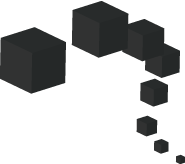Accès chercheur
Molecular Similarity: Combining Neural Networks and Knn Methods
| Auteurs: | » Abdelmalek Amine » ELBERRICHI Zakaria » Michel Simonet » Rahmouni Ali. |
| Type : | Chapitre de Livre |
| Edition : Castro and A.K. Haghi | ISBN: 978-1-60960- |
| Lien : » http://www.igi-global.com/chapter/molecular-similarity-combining-neural-networks/56452 | |
| Publié le : | 01-01-2012 |
In order to identify new molecules susceptible to become medicines, the pharmaceutical research has more and more resort to new technologies to synthesize big number of molecules simultaneously and to test their actions on given therapeutic target. This data can be exploited to construct the models permitting to predict the properties of molecules not yet tested, even not yet synthesized. Such predictive models are very important because they make it possible to suggest the synthesis of new molecules, and to eliminate very early in the the molecule’s search process the molecules whose properties would prevent their use as medicine. The authors call it virtual sifting. It is within this framework that research by similarity is registered. It is a practical approach to identify molecules candidates (to become medicines) from the data bases or the virtual chemical libraries by comparing the compounds two by two. Many statistical models and learning tools have been developed to correlate the molecule’s structure with their chemical, physical or biological properties. The large majority of these methods start by transforming each molecule in a vector of great dimension (using molecular descriptors), then use a learning algorithm on these vectorial descriptions. The objective of this chapter is to study molecular similarity using a particular type of neural networks: the Kohonen networks (also called “SOM†Self- Organizing Maps), applying the nearest neighbor algorithm to the projection of the molecules (coordinates) in the constructed MAP.





